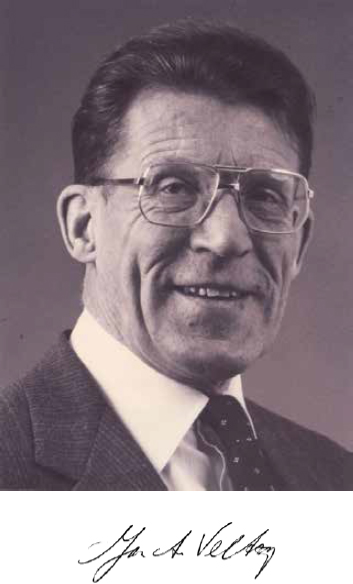Council of the United States/World Energy Conference Study Group on Energy in Less Developed Countries (1984–86). He was a member of the International Council on Large Electric Systems (CIGRE) and an alternate representative on the US national committee (USNC) for the World Energy Conference.
He also served on the National Research Council’s Committees on National Communications Systems Initiatives (1982–84) and on Electric Energy Systems (1985–86) as well as the NAE’s Electrical/Nuclear Power Engineering Peer Committee (1985–87) and Membership Committee (1986–87).
In 1978 he was elected a fellow of the Institute of Electrical and Electronics Engineers (IEEE) for his contribution “to the planning of reliable and economic electric power systems,” and two years later he was elected to the NAE. In 1995 he received CIGRE USNC’s Philip Sporn Award, which is presented for “career contributions to the advancement of the concept of system integration in the theory, design, and/or operation of large, high-voltage electric systems in the United States.”
He traveled frequently, both professionally and as a tourist. He appreciated the contributions of the world’s cultures and made an effort to enrich himself with these. He attended the ballet and symphony and visited museums as often as possible. He was an avid reader, particularly of world history, and loved to immerse himself in a new book about a past empire, political event, or eminent statesman.
He swam regularly and enjoyed walks in the park and, when possible, on South Carolina beaches. In his later years he maintained his walking regimen, but permitted himself to take frequent breaks to watch rustling squirrels, playing children, or swooping birds, or to greet a neighborhood dog or smell a flower. Many will remember him as a strolling gentleman, quick with a friendly smile.
Greg was brilliant. He loved his family. He was a kind man and is greatly missed.
He was predeceased in 2008 by his wife of 49 years, Martha Elizabeth Williams Vassell. He is survived by daughter Laura Kay Vassell, son Thomas Gregory Vassell, and several extended family members in the United States and Europe.

JAN A. VELTROP
1922–2007
Elected in 1998
“For engineering design of concrete arch dams and development of hydroelectric projects.”
JAN ADRIANUS VELTROP, a lifelong innovator and contributor to the design and construction of thin concrete arch dams and hydroelectric projects, passed away March 24, 2007, at the age of 85. He was retired chief engineer and senior vice president of Harza Engineering Company, where he worked from 1954 to 1994.
Jan was born in Coeverden, the Netherlands, on March 9, 1922, and became a naturalized citizen of the United States on January 8, 1957. He contracted polio when he was two years old and walked with a cane. He dealt with the problems of surviving in the Netherlands during occupation by the German army during World War II, but his disability kept him from military service.
He displayed an early propensity for math and science and graduated with a BS degree in mechanical engineering from the Technological University of Delft in 1949. He then immigrated to the United States and entered Rensselaer Polytechnic University, where he graduated with an MS in mechanical engineering in 1951. He was accepted to the graduate engineering program at the Massachusetts Institute of Technology and in 1953 earned his PhD in mechanical engineering.
Upon completion of his doctorate, Jan took an appointment as an assistant professor of engineering mechanics at Louisiana
State University. But he found that he would be happier in the design and construction of projects, and so accepted a position with Harza Engineering Company in Chicago as a senior engineer, performing structural analysis and project design.
At Harza he participated in the analysis and design of an underground powerhouse for the Ambuklao hydroelectric project in the Philippines, concrete and steel superstructures for the power plant at the Brokopondo project in Suriname, penstock and tunnel liners for La Garita Dam in Guatemala, and the Derbendi Khan hydroelectric power project in Iraq. He was also a registered professional engineer in Colorado, Illinois, and Virginia.
He progressed in responsibility and was promoted to head Harza’s arch dam section in 1959, structural department in 1962, and civil design branch in 1971, before advancing to deputy chief engineer in 1976, chief staff engineer in 1977, and chief engineer in 1979. He was appointed a vice president in 1981 and senior vice president in 1987.
In 1964 he was invited to be the first dean of the College of Engineering at the University of Nigeria in Nsukka. He had a strong desire to work with underdeveloped countries and so accepted the appointment. One of his responsibilities was to train his Nigerian counterpart to take his position. During his tenure he also oversaw the construction of three new buildings for the college. His time there ended in 1967 when, because of security concerns, he and his family had to be evacuated in the run-up to the Biafran War.
His mathematical and engineering skills were instrumental in the development of new design procedures for Harza. For example, he envisioned that arch dams could be built thinner than gravity-arch dams such as Hoover Dam and, using his analytical skills, developed the technology for designing safe, thin, double-curved concrete arch dams. These required far less concrete and resulted in lower construction costs and a shorter construction time. He promoted modern methods of analysis and design of dams and hydroelectric projects, and published and presented more than 90 technical papers at engineering conferences around the world.




